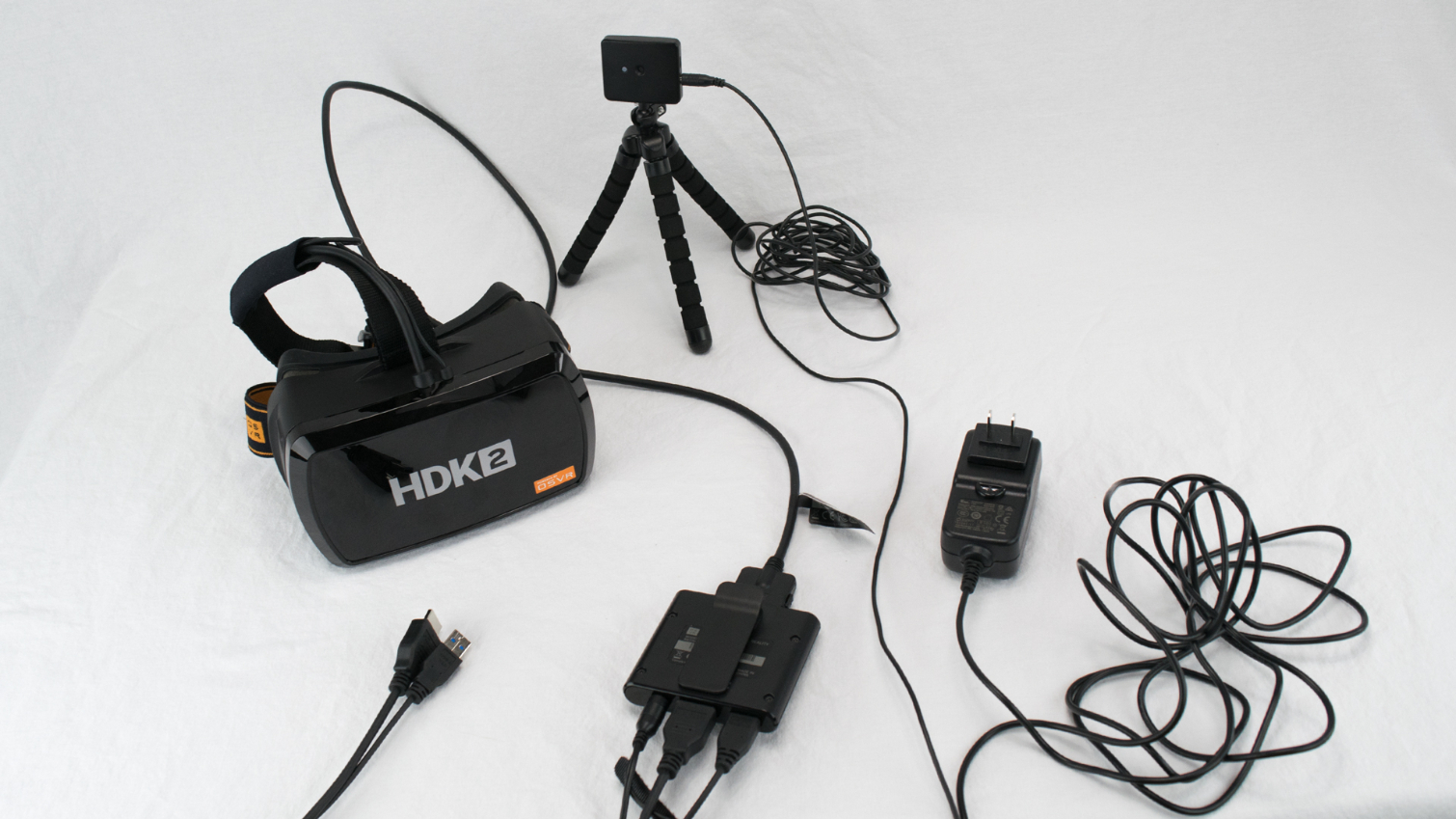OSVR Hacker Developer Kit 2 Review
Why you can trust Tom's Hardware
Subjective Evaluation
Without software to accurately measure and compare the OSVR HDK2 to its peers, all we can do is give our subjective impression. We ran the headset through a series of real-world workloads and evaluated it from the perspective of a gamer. The tests included a selection of SteamVR titles, along with observations of the HMD’s physical comfort.
Using The OSVR HDK2
The OSVR HDK2 isn’t a major improvement over the HDK 1.4. It offers better graphics quality, sure. But it comes up short in a number of other important metrics: it doesn't fit well, it's heavy, the cables are cumbersome, and its tracking accuracy leaves much to be desired.
Last year during our evaluation of the HDK 1.4, we ran into issues with the IR camera system. An OSVR representative even told us to disconnect the camera and rely solely on orientation tracking from the IMU for Steam games. We had hoped that OSVR would improve the tracking camera for its updated developer kit, but you get the exact same camera this time around.
OSVR recently released beta 0.8 of its HDK Windows Installer, which is supposed to improve the IR tracking system's accuracy in native and SteamVR content. It shouldn’t be necessary to disconnect the camera with the latest update, but it’s still possible to run an OSVR HMD without one. The OSVR Server Console skips the calibration process if it doesn’t detect the IR tracking camera.
Despite claims that the new software update “vastly improves” positional tracking, I hesitate to endorse OSVR's assessment. Language like that implies a satisfying step forward. And while the latest update does offer better tracking than what came before, gamers will still find this solution lacking compared to the more refined competition.
Tracking problems were my primary criticism of the OSVR HDK 1.4. Sadly, tracking remains the OSVR HMD’s greatest weakness. Razer and Sensics focused on upgrading the display to match the current industry standard resolution of 2160x1200, which is nice. But the partnered companies should have directed their efforts at replacing their tracking implementation.
OSVR believes it can solve the problems with software updates. However, I suspect that the camera is primarily to blame. The IR sensor rests inside a quarter-inch-wide opening, and it’s recessed by a couple of millimeters. The camera has no trouble detecting the HMD's position when the headset faces the camera, but it has trouble when you turn your head away. The OSVR HMD doesn’t have side-facing IR LEDs, leaving a big gap in the tracking space. When the camera loses track of the headset, the IMU is supposed to take over, but it doesn’t match the camera’s tracking well. The transition between the two tracking modes is jarring; when you turn your head, the image doesn’t follow correctly. The OSVR HDK 1.4 suffered a similar artifact.
Get Tom's Hardware's best news and in-depth reviews, straight to your inbox.
MORE: Best Virtual Reality Headsets
MORE: All Virtual Reality Content
MORE: Virtual Reality Basics
MORE: The History of Virtual Reality
Kevin Carbotte is a contributing writer for Tom's Hardware who primarily covers VR and AR hardware. He has been writing for us for more than four years.
-
bit_user Thanks for taking the time & effort to review it.Reply
An interesting counterpoint would probably be this Amazon customer's review:
https://www.amazon.com/gp/customer-reviews/R32VP1Z15K5MBW/ref=cm_cr_dp_d_rvw_btm?ie=UTF8&ASIN=B01HDUVIZ0
